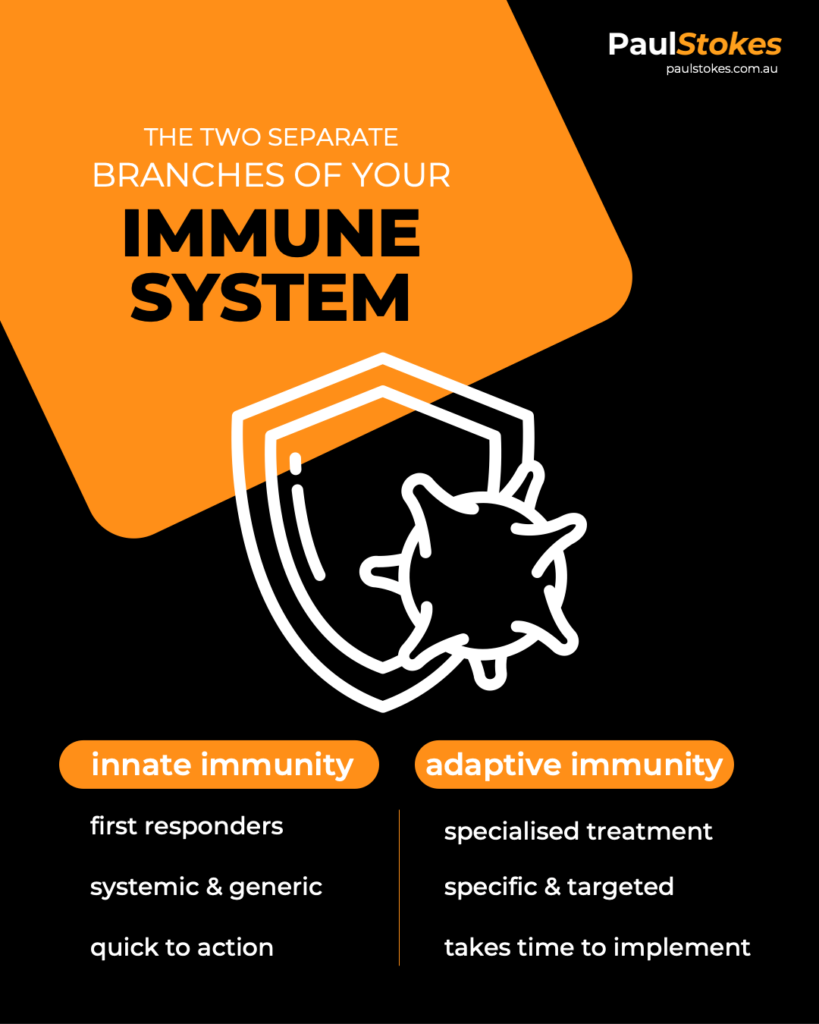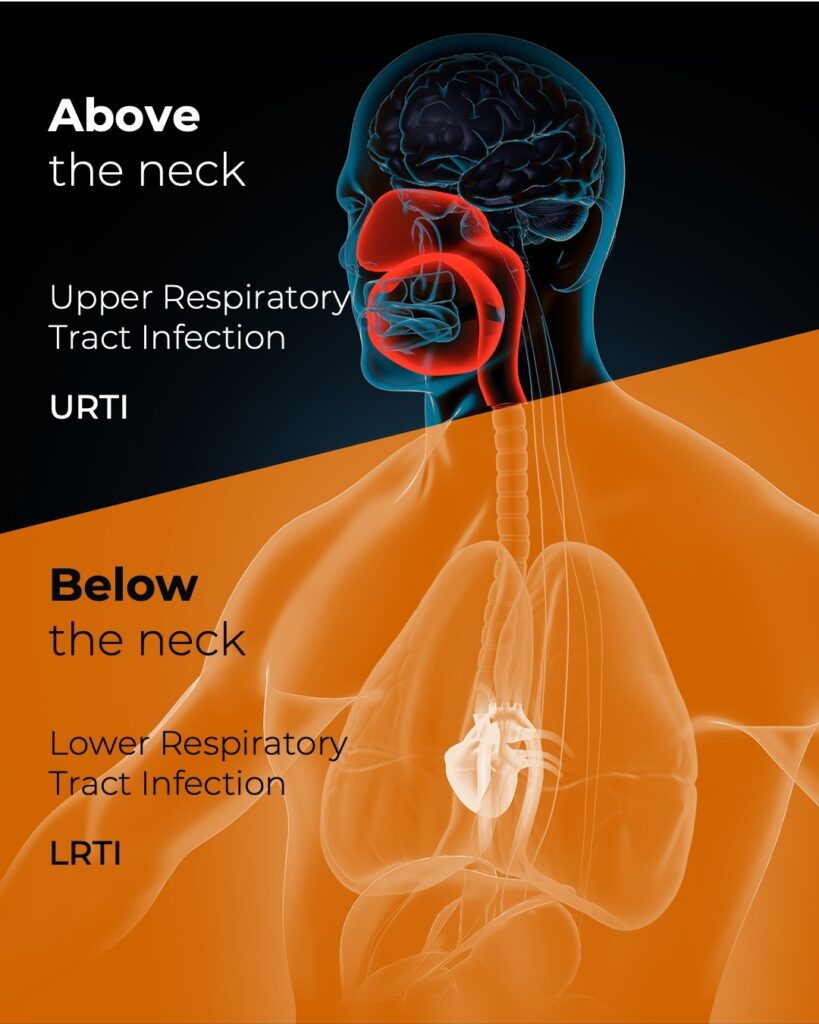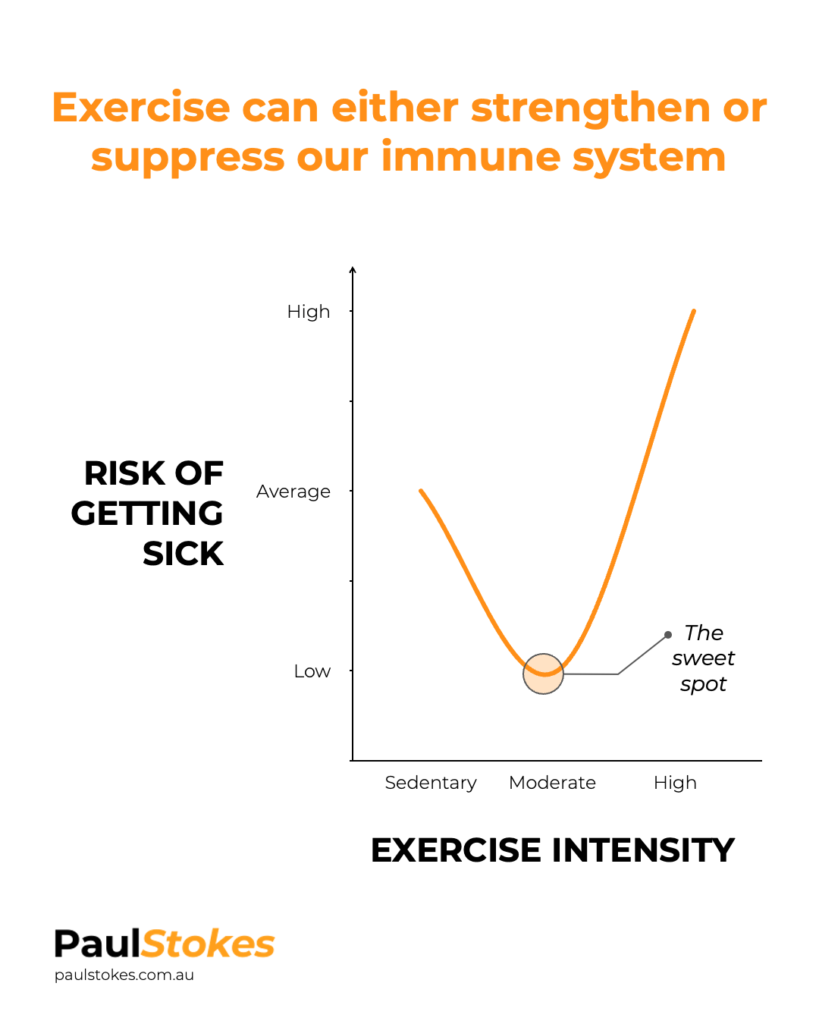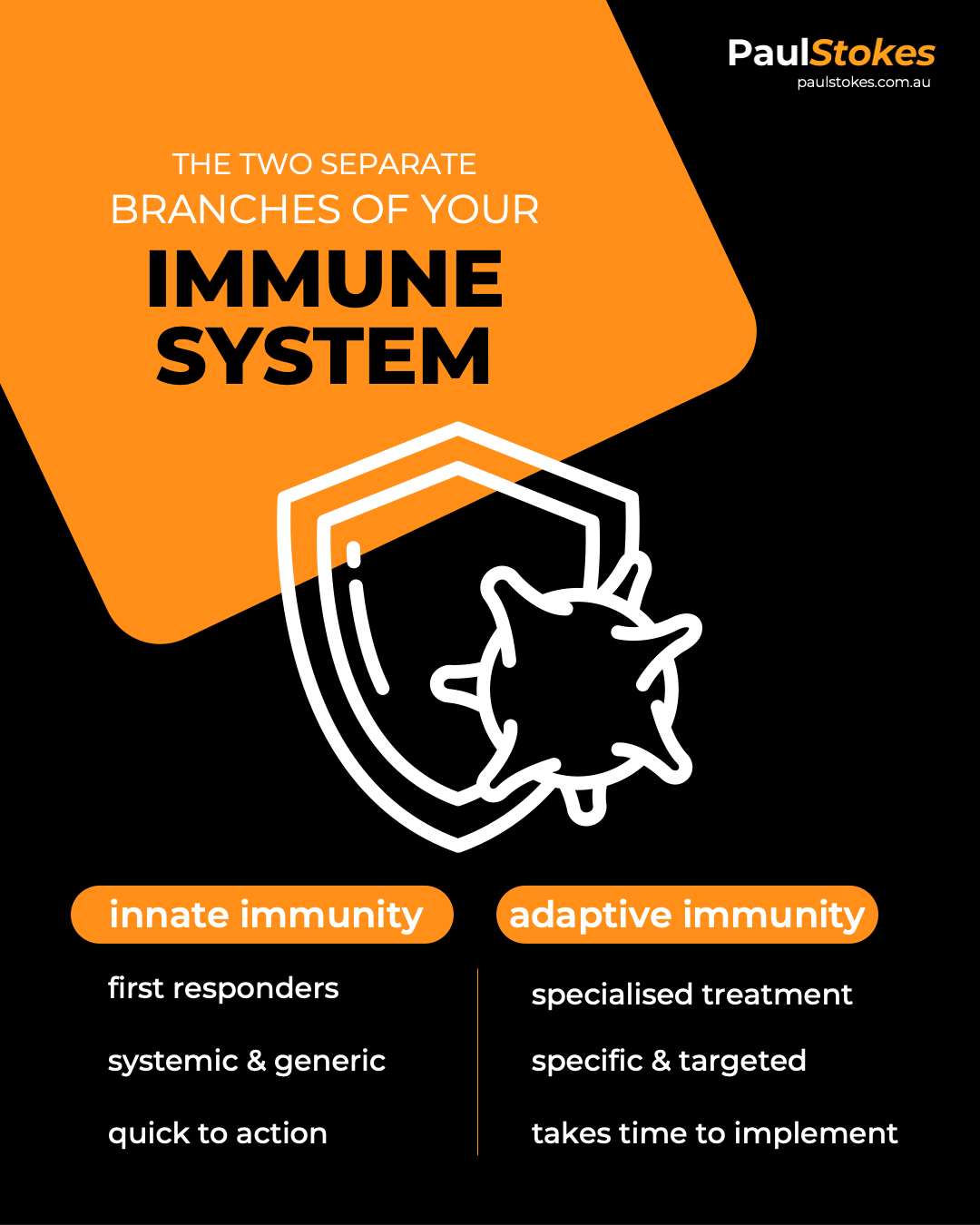Unfortunately, illness is part of life. Just when things seem to be going well and your exercise regime is starting to pay off... BOOM! You get sick. It's no fun and feels lousy. However, many times we might wonder if we can still train even though we're feeling ill or even just a little under the weather. Today we're going to explore whether or not you should exercise when you're sick.
More...
Disclaimer: Remember, articles contained on this site are for information purposes and should not be construed as prescriptive advice specific to your personal situation.
In case of illness or injury, your first point of call should always be your healthcare professional.
It's a dilemma many of us have faced in our gym lives. Training is going well, our nutrition is on point and we're even on top of our sleeping patterns. Then, we feel a little tickle at the back of our throat. Perhaps we notice a slight sniffle, or a runny nose.
Oh no! You can't get sick, you don't have time for this!
Then the thoughts start creeping in. Is it okay to keep working out when you feel ill? Should I still go to the gym when I'm sick? Do I need to tone down some of my exercises and take it easy?
It can be quite overwhelming and many people seem unclear on what the best course of action is. Will exercise help you recover from your illness quicker, or will it make you worse? Today we're going to go through the ins and out of exercising while you're sick to help you determine whether you should work out or rest.
Should you exercise when you're sick, or is it better to rest and recover?
A lot of that answer will depend on the type and severity of your illness. In mild cases of cold or sore throat, light activity should be okay. However, let's look at how our immune system works and what our exercise session might do to our sickness.
A brief overview of your immune system
You likely already know, but when your body comes under attack from an infection, it fights back.
It is our immune system that puts up this fight. In doing so, it works hard to defend us and protect us from the effects of whatever microbe is invading our system.
All the cells, functions and pathways involved in this defensive action are what's known as our immune system.
You may not realise it, but what we call our immune system can actually be divided up into two parts. Our innate immune system, and our adaptive immune system.
Some immune system terminology:
Microorganisms
microbe or microscopic organisms. Commonly referred to as 'germs'.
Pathogen
a foreign microorganism, such as bacteria, parasite, virus or fungus that can cause disease.
Antigen
a foreign substance which induces an immune response in your body, especially the production of antibodies. Often, the part of a microorganism that your immune system 'recognises'.

The innate immune system - our natural immunity
Our innate immunity is what we are born with, our natural immunity. Often, people don't realise these features of our body are actually part of our immune system. They help protect us from infection and put up a daily fight against foreign bacteria, viruses and fungi entering our body.
"If you didn't have innate immunity, you'd be dead."
Components of our innate immunity:

Physical Barriers
Designed to stop microbes entering our system in the first place.
Our skin, mucous membranes, mucus and phlegm production, saliva, nasal hair and cilia.

Chemical Agents
For example, our stomach acid has an extremely low pH.
This can take care of many pathogens who enter our system via our digestive system.

Protective 'Soldier' Cells
Special white blood cells, such our 'Natural Killer' or NK cells which non-specifically target infected cells.
We also have macrophages - cells which literally engulf and eat other cells to render them inactive.

Responses and Reflexes
Subconscious impulses and reactions your body makes.
Simple things like sneezing and coughing to clear your airways and protect us from infection. Additionally, your body uses more complex defense reactions, such as inducing a fever to help kill invading pathogens.

Our adaptive immune system - acquired immunity
Our adaptive immune system is probably what most people think of when they think about how our immunity works. It's called our acquired immune system as it takes time to build and develop. This is the immune response where our special white blood cells work to recognise and fight particular pathogens, using antibodies.
Components of our acquired immunity
Essentially, our adaptive immune system is the basis for how vaccinations work. By introducing a tiny dose of a specific antigen, your body can recognise it and form antibodies to it. That way, if you ever become infected with the 'real' pathogen, your immune system is primed and ready to go. It knows what to do and can react far more quickly and effectively.

Why do we need two separate parts of our immune system?
Ultimately, it makes our body better-equipped to deal with infection and illness more effectively. And this is a big factor when deciding whether you should exercise when you are sick.
When confronted with any pathogen, our body's natural defenses, our innate immunity, kick in. These are our 'front line' defenses against invading microorganisms. Things like raising your body temperature, killing off 'suspect' cells, producing phlegm to flush out your nasal passages and trap foreign organisms.
It takes time, often several days, for your adaptive immune system to find the culprit and produce specific antibodies to help fight it. Our innate immunity 'holds the fort' in the meantime, giving our other immune system cells time to get to work.
When I was studying for my BSc (Hons) in Immunology and Mircobiology, we had one lecturer who liked to reiterate just how important our innate immunity was. Professor Stimson used to tell us "If you didn't have acquired immunity, you'd get very sick. If you didn't have innate immunity, you'd be dead."
Can you workout if you have a cold or a sore throat? Use the above or below the neck guide to decide if you should exercise when sick
At this point, we also need to determine how 'serious' our illness is and the severity of our symptoms.
To do this, we can classify our symptoms into two categories:
Essentially, we're looking to establish whether we have an upper respiratory tract infection, or a lower respiratory tract infection.

URTI and LRTI can sound quite technical, but most people are able to identify where they might be experiencing their symptoms. If symptoms are "above the neck", then it's likely we're dealing with an Upper Respiratory Tract Infection (URTI). On the other hand, if we have chesty cough, congestion in our lungs, wheezing, etc. then it's more likely to be a Lower Respiratory Tract Infection (LRTI).
We can use this classification to decide whether it's a good idea or not to exercise when we're ill.
Generally speaking, "above the neck" URTIs tend to be less severe. As a result, it's more likely that a light training session should be okay. Conversely, exercise may make a LRTI worse.
Examples of common upper respiratory tract infections include:
On the other hand, some common lower respiratory tract infections are:
Exercises and activities to consider for when you are feeling sick, ill or under the weather
We've now established that a lot will depend on the severity of your symptoms and illness. Let's look at what sort of work outs you might consider if you are sick.
As a general rule, if you're going to exercise when ill, it's a good idea to stick to lower intensities and more general forms of exercise.
Things like:
On the other hand, it's a good idea to avoid more strenuous activities. Intense sessions may make your condition worse and can have an adverse affect on your immune system. More on this later.
Generally speaking, if you're going to train while you are sick, it's a good idea to avoid:
Exercise and lifestyle choices can affect the immune system and influence your response and recovery to illness and sickness
Exercise is good for us, we know that. However, in some cases, exercise when we're not feeling well may undermine our progress and have an adverse effect on our health.
How a one-off exercise session affects your immune system
A short, intense work out doesn't suppress your immune system.
A moderate-intensity, medium duration exercise session can boost your immunity and help fight off sickness and infection.
Extended-duration, intense sessions can suppress your adaptive immune system.
How long term exercise habit affect your immunity and resistance to disease, infection and illness
CARDIO
Regular resistance training can stimulate and enhance your innate, or natural, immune system.
WEIGHTS
On the other hand, regular moderate intensity exercise can strengthen and support a healthy adaptive, or acquired, immune system,
Is there a point at which too much exercise can cause us to become sick more often, and suppress our immune system?
Yes there is. While regular exercise has been shown to strengthen our immune system, we can have too much of a good thing.
The response to prolonged exercise against our risk of infection follows what's known as a J-shaped curve.
Essentially, A J-curve depicts a trend that starts with a sharp drop and is followed by a dramatic rise. In other words, if we were to plot our risk of infection from any cause on the y-axis, and our regular exercise intensity on the x-axis, we would see the following:
At low levels of exercise, we see an 'average' risk of infection. That is to say, sedentary individuals don't have particularly strong immune systems. In saying that, they're not particularly weak either. Basically, exercise doesn't factor into having an effect on immunity if there isn't much exercise taking place.
As we progress towards regular, moderate-intensity workouts, we see a fall in our infection risk. We tend to become sick less often and are more resistant to illness and disease. Regular exercise does indeed strengthen our immune system.
However, if we train at high intensities over a prolonged period of time, we see a sharp increase in our infection risk. Ultimately, our body is under significant training stress imposed by strenuous workouts. As a result, we tend to see immune systems that struggle to cope and generally 'suppressed.'
Ideally, for a strong and healthy immune system, we want to sit in the sweet spot. For example, we want our exercise frequency and intensity to strengthen and improve our resistance to infection and illness.

Exercising too little or too much can lower our immunity. Sitting somewhere in the middle can improve our resistance to illness.
Other lifestyle factors that can affect our immune system and resistance to disease
Stress levels
Ultimately, stress is a huge factor that can affect our immune system. If you're under constant stress in your work or home life, then your immune system is already compromised. If you then become sick and have to fight off an infection, you're immune system comes under further strain. Furthermore, if you add in prolonged high-intensity exercise, that's additional stress. Basically, you can overload yourself and hamper your body's ability to fight off illness.
Age
As we grow older, our innate immune responses can start to slow down. They don't act as strongly, or as quickly as they do when we are younger. However, staying fit, active and eating a healthy diet can overcome many of these age-related changes.
Biological sex
Generally speaking, androgens (male sex hormones) can suppress immunity while oestrogens (female sex hormones) can strengthen it. This may be the case why women tend to fight off colds sooner than men. It's true - man flu might actually be a thing!
Sleep habits
If you frequently go without sufficient sleep, you'll jeopardise your immune system function. For a strong and healthy immune response, we need regular, good quality sleep in adequate amounts.
Exercise history and training experience
Essentially, the fitter you are, the stronger your immune system is likely to be. Exercise is likely to be less taxing for you and won't stress out your system as much. It pays to be fit and healthy!
General guidelines on whether to exercise or not while you are sick
Let's now look at how illness can progress in terms of severity of symptoms. We'll create a 'Sickness and Exercise Timeline' to help guide you as to whether it's a good idea or not to work out when you're feeling ill.
Should I train or rest when I'm sick? Check out this Sickness and Exercise Timeline:
Quick navigation:
DAY 1 OF ILLNESS
If you're going to train, it would be sensible to only exercise at a low intensity.
No exercise - your body needs to recover.
DAY 2 OF ILLNESS
Stay indoors and do a light exercise session alone. At this point, you don't want to risk infecting others. Generally speaking, keep your session to around 30-45 minutes or shorter. As a general rule, keep below 70% Maximum Heart Rate. Remember, you don't want your pulse to go too high.
Refrain from exercise until symptoms improve.
DAY 3 OF ILLNESS
Stay indoors and do a light to moderate exercise session, again on your own. If you feel up to it, you could increase your session to around 45 or even 60 minutes. Again though, we still don't want your pulse to be going too high. Ideally, keep it under 150 beats per minute.
Don't exercise and consider contacting your doctor.
DAY 4 OF ILLNESS
Wait for another 24 hours and if still improving, return to general exercise.
Don't exercise and consider contacting your doctor.
Remember, some infections can develop into serious illness. If you aren't getting better within a couple of days, see your doctor. If in any doubt, seek medical advice.
How long should you wait to exercise after being sick?
In general, it's good idea to ease back into exercise over the same duration of your illness. For example, if you were feeling ill for 3 days, take 3 days to gradually build up. On the other hand, if you were sick for a week or more, start slowly and ease back in over the following week.
So, is it a bad idea to workout when you are sick with a cold, sore throat or other illness?
Here's what some fitness professionals have to say:
If your symptoms are only mild and you generally feel okay then you might find a light session works wonders. Always keep things low intensity at the start of any cold, cough or other illness. Remember, intense exercise can stress your immune system and you certainly don't want to stress it when it's already "under attack."
I find that gentle movement, like walking or very light cario to get the blood flowing can help perk you up. Additionally, it may even stimulate your immune system and assist with recovery.
PAUL STOKES
FIFO Personal Trainer and Accredited Sports Nutritionist
I follow the general guideline that if it’s above the neck, it’s okay to train, and do so at an intense level. Just wash your hands before you touch all of the equipment to minimize giving your head cold to others at the facility. Anything below the neck, don’t come into the gym, and take it easy until you’re on the back end of it.
Nick tuminello
Award Winning Personal Trainer, International Speaker and Author
I generally ask them just how bad it is on a scale of 0 to 10. Zero would be feeling absolutely fine, whereas a 10 would be the worst they’ve ever felt (e.g., violently ill and on their death bed). If it’s anything under a 3 (say, seasonal allergies), I’m fine with them training — albeit at a lower volume and intensity. We might even just do some mobility work or something to that effect.
I think the important separating factor is that we’re looking for the difference between just not feeling 100% (allergies, stress, headache) and actually being sick and contagious, which we absolutely don’t want in the gym — for the sake of that individual and those who are training around him/her.
Of course, this is pretty subjective — but what I think it does help us to do is avoid skipping days that would have been productive training days. Everyone has had those sessions when they showed up feeling terrible, but after the warm-up, they felt awesome and went on to have great training sessions. We don’t want to sit home and miss out on those opportunities, but we also don’t want to get sicker or make anyone else sicker — so it’s a definite balancing act.
eric cressey
Certified Strength and Conditioning Specialist, Competitive Power Lifter, Sports Coach and Author
How to exercise if you feel healthy and want to avoid getting sick
In general, follow conventional healthy living advice. That is, keep moderately active on most days. If you train at high intensity or for long duration, make sure you are taking enough time to recover. Additionally, eat a well-balanced, nutritious diet and get enough sleep.
Furthermore, remember to practice good general hygiene principles and wash your hands. As mentioned above, stress can impair your immune system and make you more susceptible to illness and infections. If you want to stay fit and healthy, manage your stress levels.
How to exercise if you already have a cold, sore throat or are feeling sick
Let your symptoms guide you as to how much activity you can do. Consider how stressful your current lifestyle is, and if you're feeling particularly stressed out, deal with that first.
If you only have a cold or a sore throat, that is no fever and aches or pains, you'll likely be fine with some easy exercise. Just do as much as you can manage and don't push yourself hard. Generally speaking, avoid vigorous, high intensity work outs, even if they're short.
On the other hand, if you find yourself coming down with a fever, rest. Likewise if you have aches, pains, general fatigue, diarrhoea or swollen glands, your body probably needs to recover before you exercise. The last thing we want to do is make your illness worse by pushing your body too hard.


